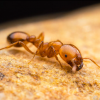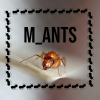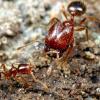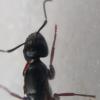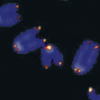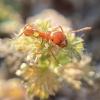Though Argentine ants displace and crush ecosystems, I do beive that Monomorium Pharonis is on par with the Argentines. Considering how adaptive they are to the ecosystems they inhabit, they have nearly taken over all states, countries and provinces. Ranging from southern Austrailia to Brittish Columbia. Generally speaking since the Pharo ant inhabit more territory than the Argentines, therefore have more opportunities to displace native fauna than the Argentines. Both are undoubtedly some of if not the worst and most dangerous tramp species.
I found this species on antmaps and it shows they are indoor introduced in almost all temperate countries. I'm guessing this only means they thrive in heated structures? Or does it mean they're found both indoors and outdoors?
Indoor introduced happens by human activity, directly or indirectly. Let's say Johnny came back from his trip to Africa to his hometown of Texas and brought back a few plants. Little to his knowledge, accidentally carried over pharo ants through those plants and places his plants in the living room of his house. They move out and colonize themselves inside their house. Now the pharo ants could do 2 things, become a supercolony, or stay unrelated and spread their genes. If the second option is chosen, the next generation is much more adapted to the climates over in x region. colony z branches out from its family and does one of 3 things, becomes a supercolony, stays within the warm house, or move outside. Next generation is more adapted to so and so place, I think you get the point. "Indoor introduced" gets thrown around less frequently than "exotic" as its not a "WOAH! I never knew this species could be found,
i wonder how it got here." as its more of "oh a human was responsible for this". Two great examples of this are hyponera punctatissima and brachyponera chinensis.


